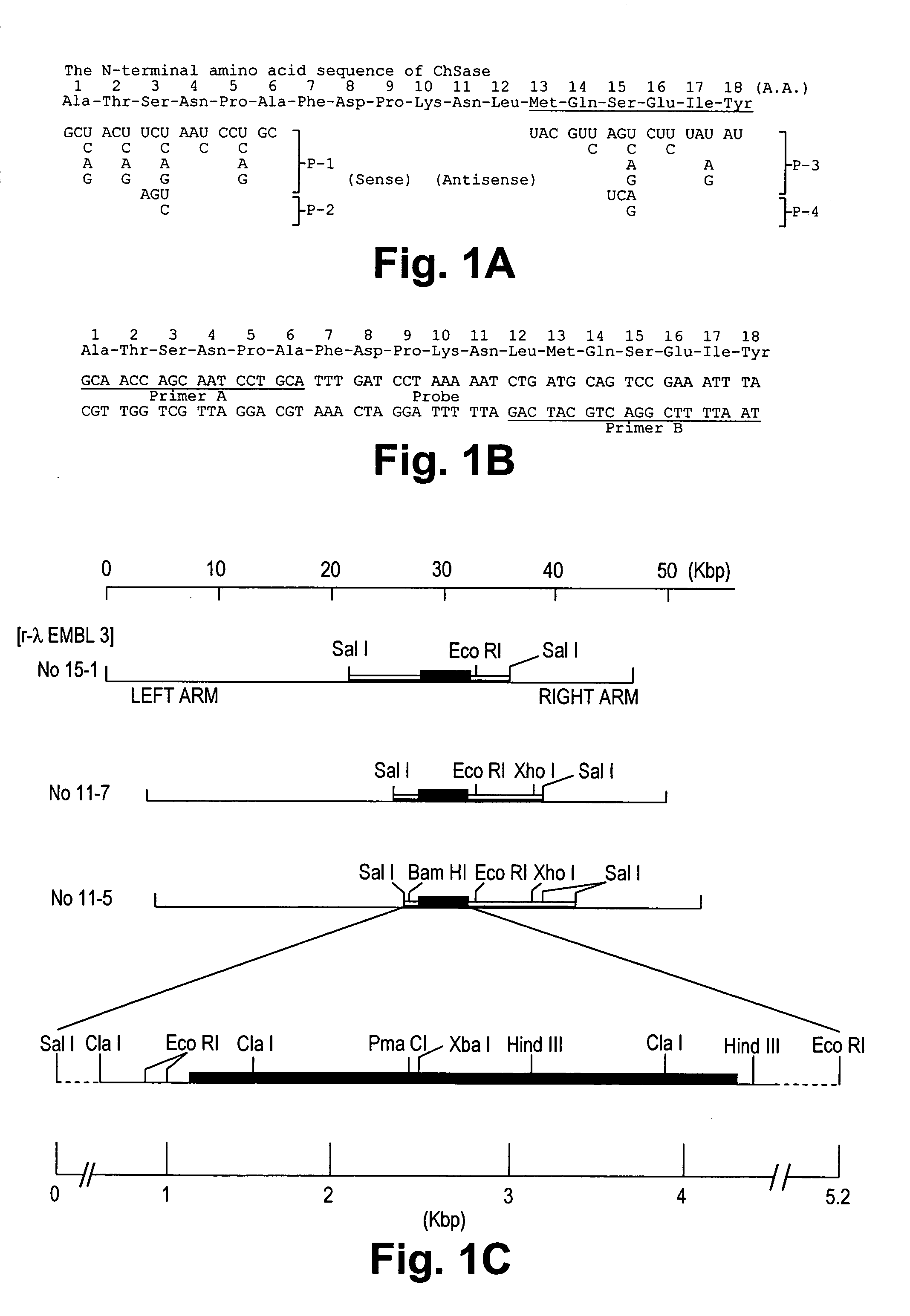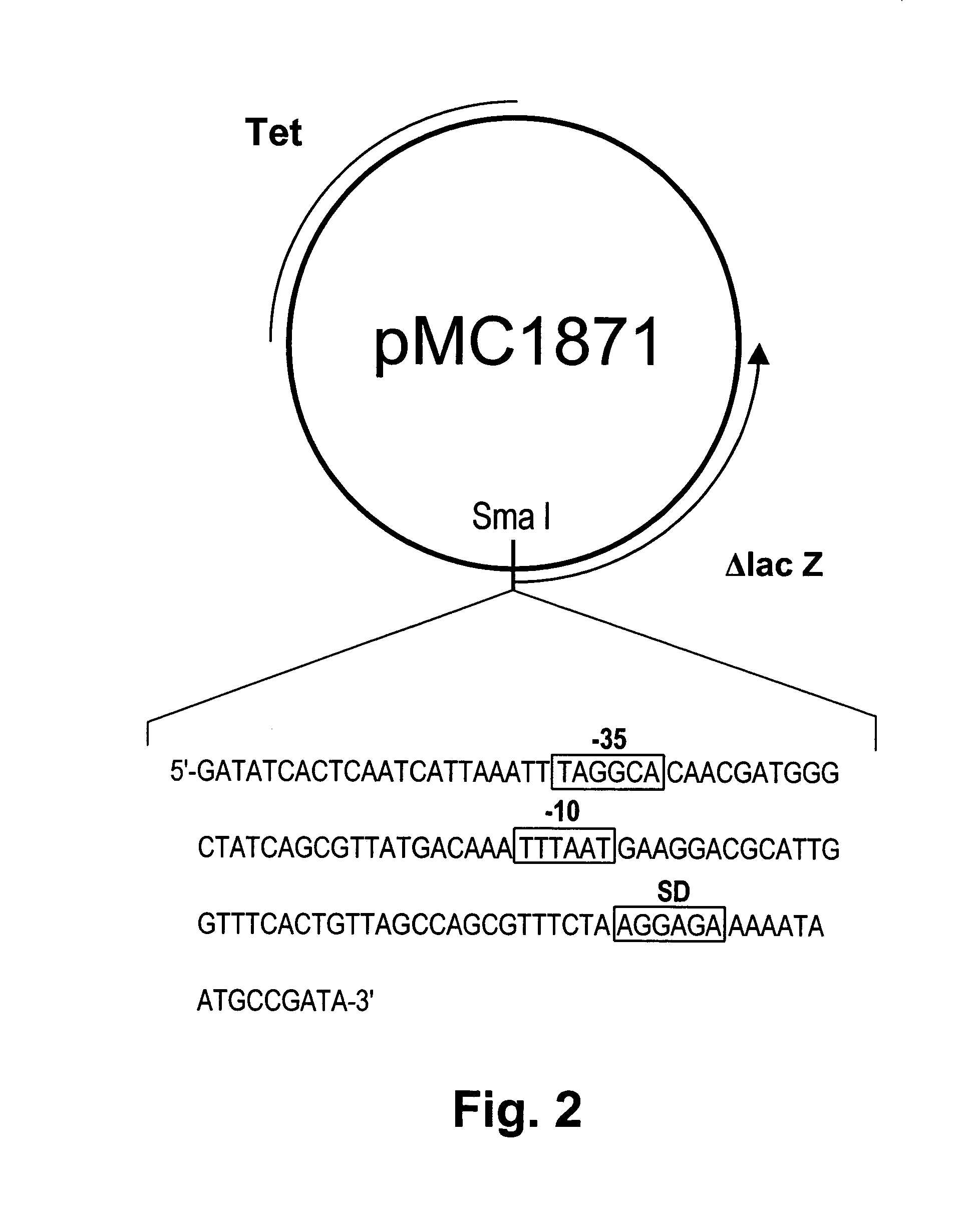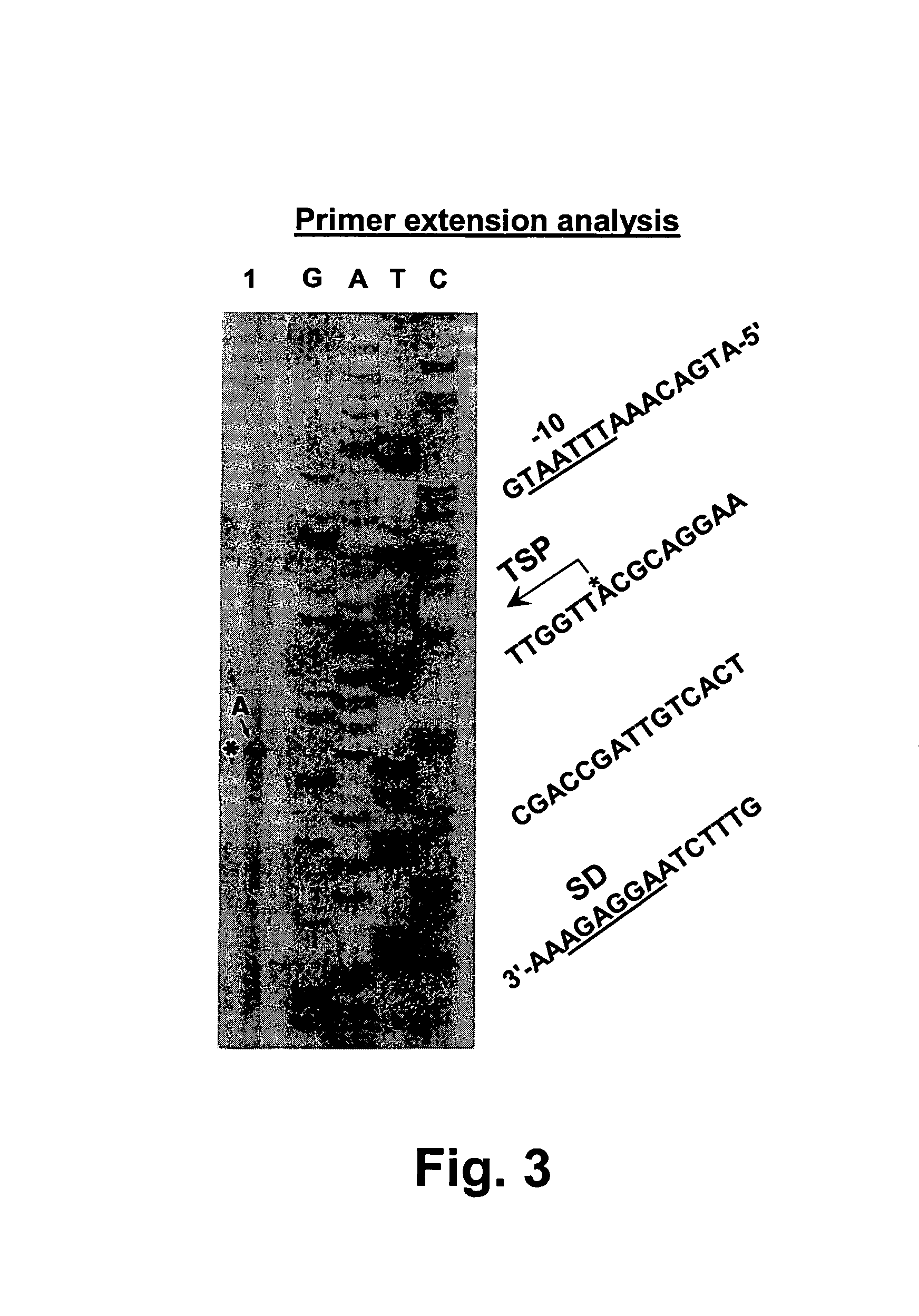Gene encoding chondroitinase ABC and uses therefor
a technology of chondroitinase and abc, which is applied in the field of gene encoding chondroitinase abc and uses therefor, can solve the problems of difficult to overcome, tedious and complicated procedures, and the preparation of chondroitinase abc from i>p. vulgaris /i>requires tedious and complicated procedures
- Summary
- Abstract
- Description
- Claims
- Application Information
AI Technical Summary
Problems solved by technology
Method used
Image
Examples
example 1
[0063]Isolation and Sequence Determination of the Chondroitinase ABC Gene
[0064]According to the amino acid sequence of the N-terminal region of purified chondroitinase ABC (Ala-Thr-Ser-Asn-Pro-Ala-Phe-Asp-Pro-Lys-Asn-Leu-Met-Gln-Ser-Glu-Ile-Tyr (FIG. 1-A)(SEQ ID NO:3)), a set of degenerate oligo mixed primers (5′-GCNACNUCNAAYCCNGC-3′ (P-1, sense)(SEQ ID NO:5); 5′-GCNACNAGYAAYCCNGC-3′ (P-2, sense)(SEQ ID NO:6); 5′-UACGUYAGNCUYUADAU-3′ (P-3, antisense)(SEQ ID NO:7); 5′-UACGUYUCRCUYUADAU-3′ (P-4 antisense)(SEQ ID NO:8))(FIG. 1-A) were synthesized as follows. To determine the appropriate primers for sequencing, PCR amplification of a combination of primers P-1(SEQ ID NO:5), P-2(SEQ ID NO:6) (sense) and P-3(SEQ ID NO:7), P-4(SEQ ID NO:8) (antisense) was performed. After agarose gel electrophoresis of these PCR products, a 54 bp fragment was extracted and directly inserted into pT7 Blue PCR vector, and the inserted fragment was sequenced. The nucleotide sequence of this fragment was found...
example 2
[0067]Analysis of the transcription region of the chondroitinase ABC gene In order to confirm the potential promoter region of the chondroitinase ABC gene, we amplified the region of nucleotide 112–283 using PCR. The PCR product was blunt-ended with T4 DNA polymerase and inserted into the SmaI site of the promoter selection vector, pMC 1871, and the hybrid plasmid, designated pCHSP, was introduced into E. coli JM109 (FIG. 2)(SEQ ID NO:14). The transformant was then cultured in an LB medium containing 25 μg / ml tetracycline at 37° C. for 14 hr, and β-galactosidase activity was assayed (Table I). Although the β-galactosidase activity of the E. coli transformant carrying pMC1871 was not detectable, the E. coli transformant carrying pCHSP produced β-galactosidase. This result indicates that the chondroitinase ABC gene can function as a promoter in E. coli cells. However, there is a possibility that the promoter recognized in E. coli cells may not be the promoter in P. vulgaris. To confir...
example 3
[0069]Production of chondroitinase ABC from E. coli transformant To demonstrate that the isolated gene codes for chondroitinase ABC, we constructed pCHSΔ6 and pCHS26 (FIG. 5). pCHSΔ6 was constructed by removing the SalI-EcoRV region (about 1 kb) upstream from the promoter region from the chondroitinase ABC gene. While pCHS26 was constructed by removing the HindIII-EcoRI region which corresponded to about one third of the 3′-terminal region of the chondroitinase ABC structural gene. These plasmids (pCHS6, pCHSΔ6 and pCHS26) were introduced into E. coli XL 1-Blue, and E. coli transformants were cultured in chondroitin or glucose medium, and chondroitinase ABC activities were assayed using the crude extract. The culture fluids of the chondroitin medium were also analyzed to determine degradation products of chondroitin 6-sulfate (Table II). The E. coli transformant carrying pCHS6 (containing a 1.0 kb fragment upstream from the promoter) produced the chondroitinase ABC when cultured in ...
PUM
| Property | Measurement | Unit |
|---|---|---|
| Length | aaaaa | aaaaa |
| Length | aaaaa | aaaaa |
| Time | aaaaa | aaaaa |
Abstract
Description
Claims
Application Information
 Login to View More
Login to View More - R&D
- Intellectual Property
- Life Sciences
- Materials
- Tech Scout
- Unparalleled Data Quality
- Higher Quality Content
- 60% Fewer Hallucinations
Browse by: Latest US Patents, China's latest patents, Technical Efficacy Thesaurus, Application Domain, Technology Topic, Popular Technical Reports.
© 2025 PatSnap. All rights reserved.Legal|Privacy policy|Modern Slavery Act Transparency Statement|Sitemap|About US| Contact US: help@patsnap.com



